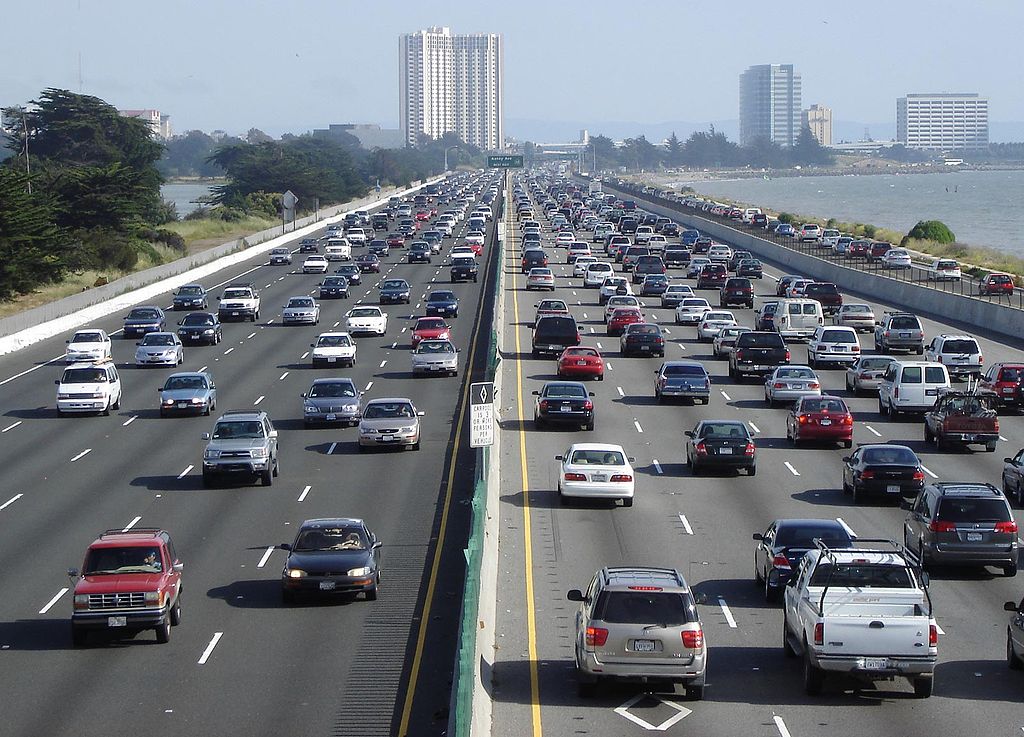During the 2016 presidential campaign, Donald Trump promised to spend $1 trillion to improve and expand the nation's infrastructure. While the White House has not yet put forth any specific infrastructure plan, everyone agrees that our infrastructure needs attention desperately. This month, historian William Childs examines the history of how we have built infrastructure—everything from roads to the Internet—usually through partnerships between government and the private sector. Without that partnership, infrastructure projects are likely to languish.
In 2015, the Business Round Table, a lobbying organization promoting the interests of large U.S. corporations, published a report on the nation’s transportation infrastructure, which briefly summarized the “history” of the situation.
After a mid-20th-century spending spree on America’s highways, railways, waterways and harbors, and airlines, expenditures dropped precipitously and remained low for several decades. Even though the nation’s population doubled during the last half of the century, Congress had not supported repairs or expansions.

The report noted that the quality of the U.S. transportation infrastructure ranked only 16th in the world. It argued that expenditures on infrastructure would produce jobs and significant economic growth. “It’s time to strengthen our economic foundation by reinvesting in transportation infrastructure,” the report concluded.
The report mirrored many others that had been produced during preceding decades.
The ASCE (American Society of Civil Engineers) has continuously beat the drums for increased infrastructure spending, awarding a D+ grade this year to the nation’s transportation infrastructure. In June 2017, after an accident that injured many, the governor of New York declared the condition of the New York City subway system a public emergency and pledged another $1 billion for its ongoing capital campaign.

Workers survey the damage after a commuter train crashed into a passenger car near Valhalla, NY in 2015 (left). In 2007, the Minneapolis I-35 Bridge collapsed during rush hour, killing 13 and injuring 145. In 1990, the federal government rated the bridge—and 75,000 others—as “structurally deficient” (right).
These urgent reports focused narrowly on transportation, which is only one of the many infrastructures that have made possible the extraordinary success of the American economy. Infrastructure includes a much wider range of systems, technologies, and institutions: the financial sector (banks, insurance companies, mortgage firms, stock exchanges), energy delivery systems (electric and natural gas utilities; natural gas and petroleum pipelines; LNG (liquefied natural gas) ports; and wind and solar panel farms), communications (telephone, radio, satellite, and the Internet, both wired and wireless), and municipal infrastructures (water, sanitation, schools, and trash disposal).
In fact, these infrastructures have made possible the modern abundance that Americans often take for granted by enabling and accelerating all three stages of industrial change.
The First Industrial Revolution in the 18th and 19th centuries was supported by rivers, roads, canals, the postal system, and Alexander Hamilton’s financial system.
The Second Industrial Revolution (mid-19th century) was characterized by railroads, telegraph, telephone, electricity and natural gas, local banks, and national and international stock exchanges.

Chartered in 1791, Alexander Hamilton designed the First Bank of the United States to stabilize and improve the nation’s credit (left). The 1993 unveiling of the road sign for the Dwight D. Eisenhower National System of Interstate and Defense Highways (right).
And the Third Industrial Revolution (mid-20th century to the present) was pushed forward by all of the above plus highways, the Internet, and interstate banking.
The American capitalist system is a mixed economy, part private and part public, and its infrastructures are built through private-public relationships. While the private sector has dominated, the public sector has lent key support through establishing a legal system, encouraging banking expansion, and offering direct and indirect subsidies to speed up development.
The mixed approach to infrastructures has worked well over the course of American history. Government investment has been an economic multiplier, empowering private enterprise to prosper.
Infrastructure history is incredibly complex and unpredictable. All infrastructures were shaped by economic and political forces that played out through public-private debates at the local, state, regional, and national levels. No one predicted railways would supplant canals so quickly; no one saw the Internet coming.
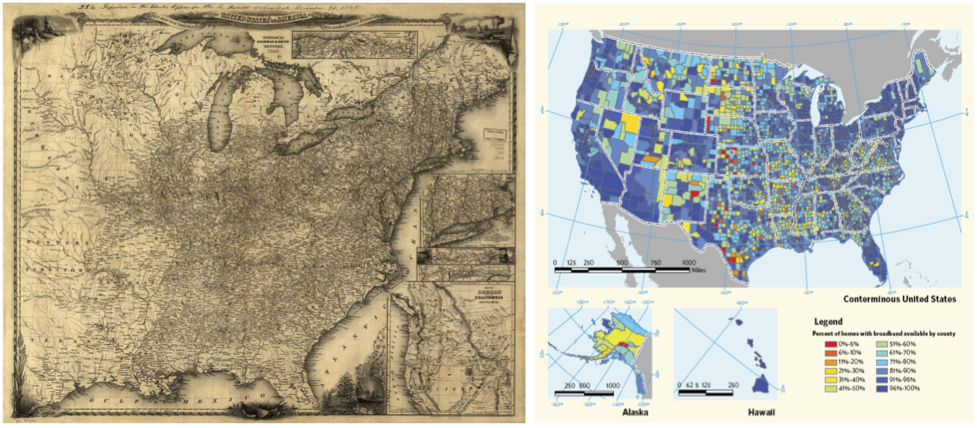
An 1846 map of the United States with roads, rails, and canals from John Calvin Smith’s The Illustrated Hand-book for Travelers through the United States (left). A 2010 map depicting the availability of Broadband Networks in the United States by county (right).
What is clear, though, is that when the government invests in infrastructure, there are often many private-sector spinoffs and profitable winners. There is often waste, but that is how the American political economy has operated from the beginning. And without public investment, infrastructure is neglected, with devastating ripple effects across the economy.
Building America’s Infrastructure, the Nineteenth Century
The dire warnings and predictions from the Business Roundtable and ASCE are not new in the history of transportation infrastructure in the United States. In the early 19th century, “internal improvements” led to spirited debates in Congress on the proper role of government in the economy.
Roads and bridges in the youthful United States were often privately owned but required government charters. Since the government was essentially granting a monopoly, it could set the terms of service (rates and hours).
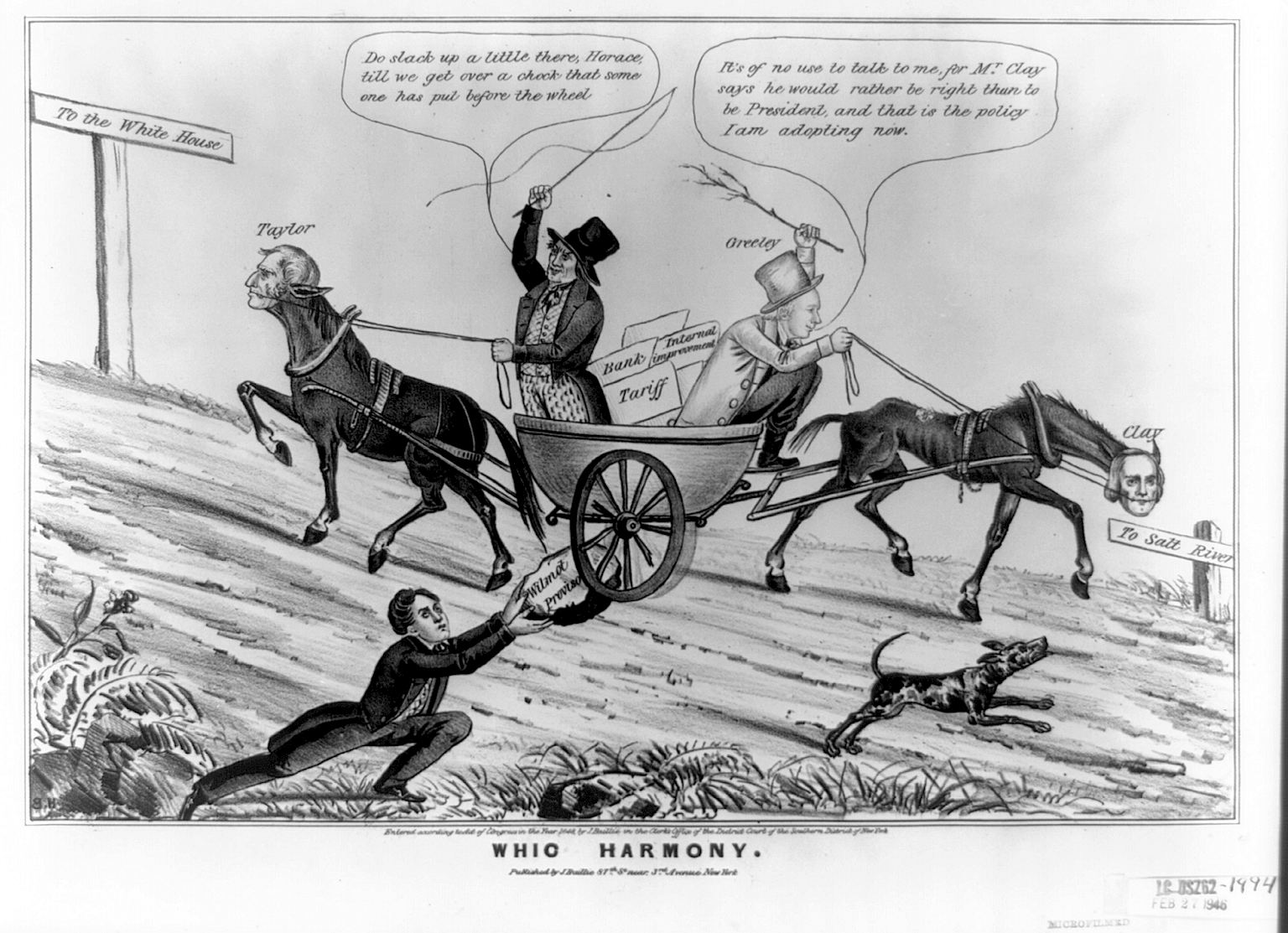
Canals took a momentary lead in large-scale transport investment, but lost out quickly to the emerging railway industry. As with canals, many of the local and state railways failed. In most cases, both private and public actors underestimated the total costs of construction and operation.
Later in the century, federal land grants to railways, especially in the West, occasioned much debate and not a little chicanery. About 50 percent of interstate railway investments in the 19th century came from the federal government in the form of land grants. (Much of the private investment came from Europe, especially the United Kingdom.)
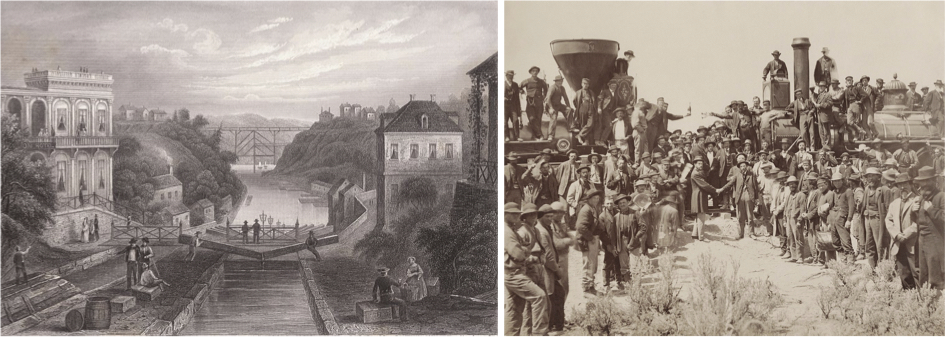
An 1855 lithograph of the Erie Canal at Lockport, NY (left). A ceremony in Promontory Summit, UT in 1869 for the completion of the First Transcontinental Railroad (right).
On the local level, urban areas underwent transformations as business leaders invested in city services, such as streetcars, electric grids, and water and wastewater systems. These not only made money for private investors but also contributed to improved living standards for more citizens.
Other businesses took advantage of the local, state, and national infrastructures to invest in new ventures. Farm equipment, sewing machines, clothing, processed foods, and countless other products poured out of American farms and factories into the growing national and global economies. Infrastructures enabled raw materials and crops to get to the factories and processors and finished products to arrive at retail stores.
By the late 19th century, for example, Sears, Roebuck and Company took advantage of the national infrastructures to expand its initial watch business into a mail-order catalog and delivery enterprise that listed thousands of products, eventually including entire house construction kits in its famous catalogs.
The mail system delivered the catalog; customers could use the telegraph, telephone or mail to order products; and the railways and local delivery firms or the post office would deliver the goods.
Rural consumers (and retailers like Sears and Montgomery Ward) were helped when Congress created rural free delivery (RFD) in the late 19th century and allowed the post office to deliver parcel posts in 1913. In that year, Sears sold five times the items it had the year before.
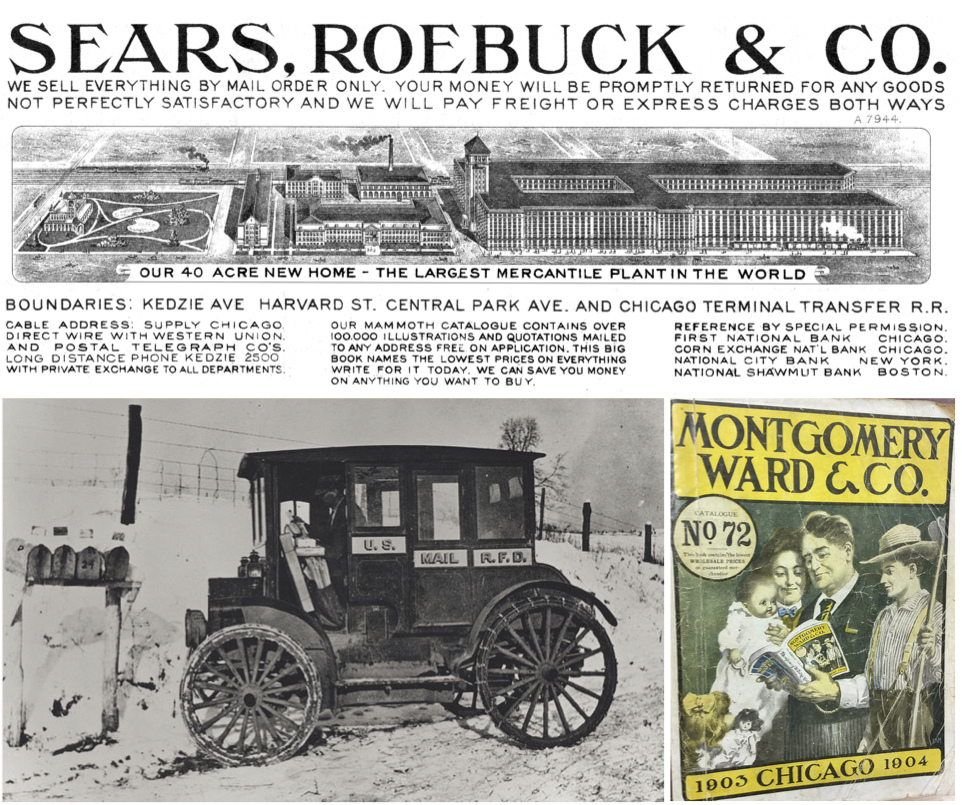
Akin to Amazon Prime's free delivery, Sears, Rosebuck & Co. offered free delivery through the Post Office's Rural Free Delivery service for its thousands of mail-order goods (top). The Post Office encouraged its Rural Free Delivery (RFD) carriers to adopt automobiles instead of horses and wagons as this driver did in 1910 (left). The 1904-04 Montgomery Ward & Co. catalogue had over 1,000 pages of merchandise (right).
The significance of these public and private investments in infrastructures and economic activity throughout the 19th century is clear. Sometime around 1900, the United States surpassed the United Kingdom as the largest economy in the world.
Roads and Electricity: 1910-1940
Development of the American consumer economy took off between 1910 and 1940, a period in which Americans experienced a world war, a sharp postwar recession, and a decade of prosperity for many but not all, followed by the most severe depression in the nation’s history.
As before, politics shaped government promotion and regulation of infrastructure expansion. Some infrastructures thus received more government and private support than others: electric utilities more than natural gas; highways and airport construction over railways.
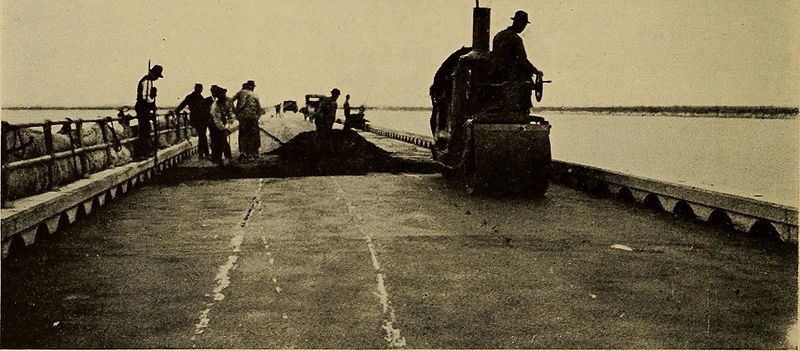
Experience from World War I encouraged some expansion of road construction during the 1920s. Funding of highways during the first half of the 20 th century came from both state and federal budgets. In the 1920s, the percentage breakdown between state and federal spending was about 57 to 43. User fees (gasoline taxes and automobile licenses) were the main source of funds. But conflict between the many government entities involved in road-building—city, county, state, and national governments—slowed that growth.
Expenditures for national highways under the New Deal increased but not as much as one might expect, given that a quarter of the workforce was unemployed and given the poor coverage of the national highway system.
New Deal reformers were more successful in shoring up the financial infrastructures of banking and securities (the stock market). New federal regulations held off another great financial crisis for more than 80 years. The American financial industries rebounded so strongly that they helped fund the costs of World War II and the Cold War, not only at home but also abroad.

The Norris Dam under construction in 1936 through the Tennessee Valley Authority (left). A 1940s advertisement for the Rural Electrification Administration, a federal loan program for installation of electrical systems in rural areas through cooperative electric power companies (right).
Meanwhile, a movement that began in the 1910s to expand electricity to all Americans picked up in the 1930s, with the Tennessee Valley Authority (TVA) leading the way. The TVA was the only “socialistic” program from the New Deal, as the government owned and managed the dams and lakes comprising the system. It has also been tremendously successful.
Before the 1930s, private utilities had not seen profits in stringing lines to sparsely populated rural areas. TVA and government-promoted rural electrical cooperatives showed private utilities that they could make money, and most rural Americans had electricity by the late 1940s. In 2017, electric cooperatives still deliver about 11 percent of all kilowatt hours of electricity, the remainder supplied by private providers.
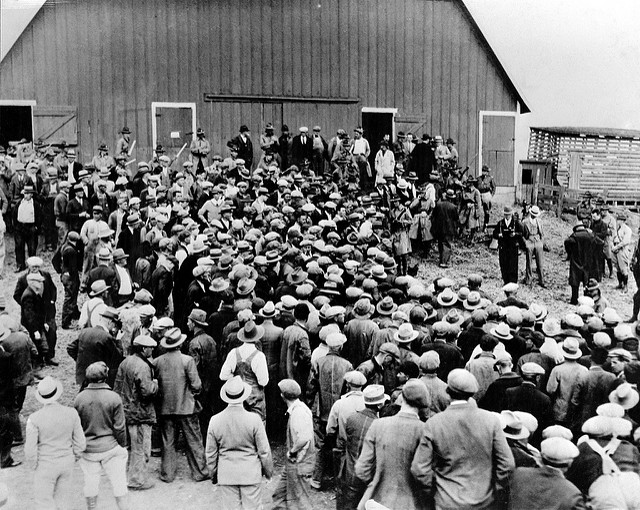
Government programs to help middle class Americans keep their houses during the Depression expanded over time to promote home ownership. The Federal Housing Administration (FHA) and Federal National Mortgage Administration (FNMA, or Fannie Mae) were joined by other programs later in the century to make the housing industry an important infrastructure.
The Era of Affluence: 1940-1980
Together, the New Deal and World War II ushered in the era of “Big Government.” This led to the mid-20th-century spending spree noted above and underlay the so-called Era of Affluence (1945 to 1970s).
War spending caused the national budget to increase from just under $10 billion (1941) to over $98 billion (1945). The Revenue Act of 1942 exponentially increased the amount of money available to Washington by bringing almost every working American into the income tax system.
Politicians gave the government more and more responsibility for shaping the macro economy. The Federal Reserve System was tasked with controlling inflation; other government agencies regulated insurance companies, S&Ls, and commercial and investment banks. The financial system of the United States was known as the safest in the world.
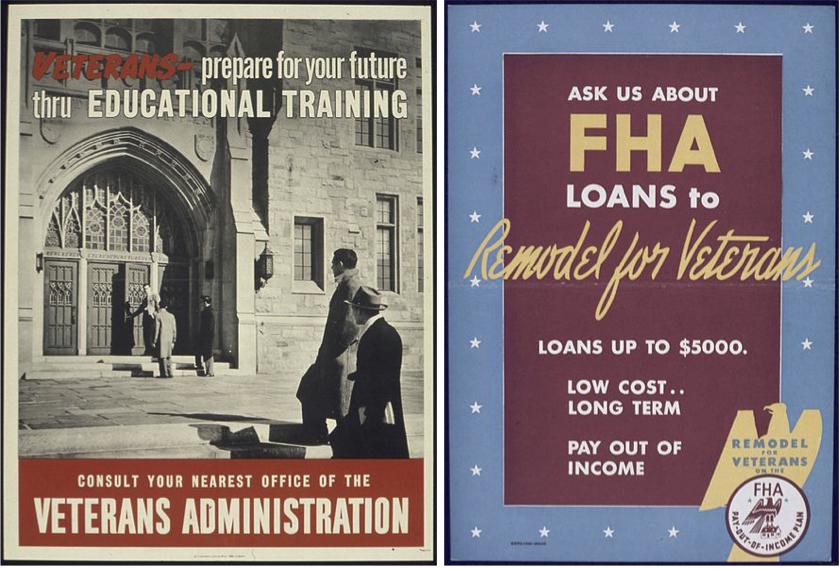
An Office of Emergency Management poster promoting the educational benefits available to veterans through the GI Bill (left). An advertisement for home loans available to veterans through the Federal Housing Administration (right).
The Servicemen’s Readjustment Act of 1944, or G.I. Bill, encouraged 16 million veterans to go to college, start their own businesses, or enter job-training programs set up by the government and the private sector. This investment in human capital was one of the most important factors in creating the Age of Affluence.
Depression and war delayed many Americans’ decisions to raise children, but the Baby Boom began in 1946 and lasted until 1964. The surge in population underscored the need for expansion of many infrastructures—the highway system; suburban housing; water and wastewater systems; electricity grids and natural gas systems; and school districts. Much of the increased population occurred in the South and West, which had already been growing because of demographic shifts that began in the 1920s.

A graph depicting U.S. births by year with the “Baby Boom” generation in red (left). In 1962, NASA began construction on the Vehicle Assembly Building, one of the largest buildings in the world by volume (right).
The Cold War also prompted the federal government to pour money into research, often on university campuses, in telecommunications, computing, and nuclear energy. When the “Space Race” took off in the 1960s, NASA’s facilities benefited Florida, Alabama, and Texas, and out of that race came advances in satellite communication and weather forecasting that now constitute essential infrastructure.
The Federal Aid Highway Act of 1956 was a classic investment in infrastructure.
President Dwight D. Eisenhower had been impressed with the German highway system during WWII, and he said the 1956 Act would support national defense. User taxes went into a highway trust fund to be used for construction and upkeep, but general taxes were also employed. The national government came up with about 90 percent of the costs (the states picked up the rest) to design and construct 41,000 miles.
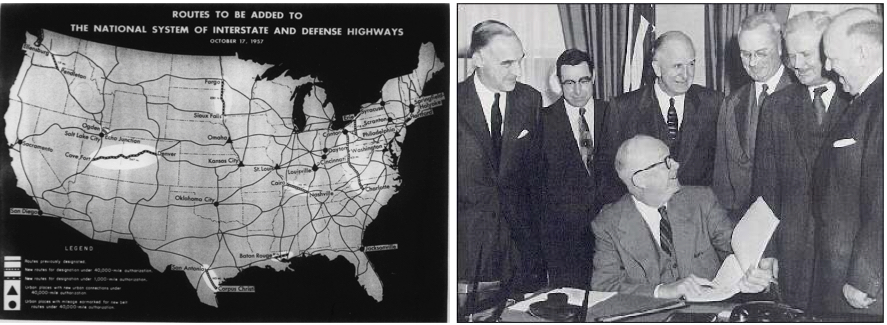
A 1957 map depicting the routes to be added to the National System of Interstate and Defense Highways (left). President Dwight D. Eisenhower discussing plans for the interstate highway in 1955 (right).
The economic benefits of the interstate highway system included creating construction jobs, reducing transportation costs for manufacturers and retailers, and stimulating new businesses along and near the interstates.
Not all was positive.
Interstate highway designs were created by engineers who devised “loops” so that truckers could avoid urban congestion. The problem with using this efficiency approach was that the loops undermined connections between urban cores and the suburbs. More often than not, the interstate highway designs cut off older, mostly minority neighborhoods from the interstates and connections to the urban core. Thriving urban business districts died.
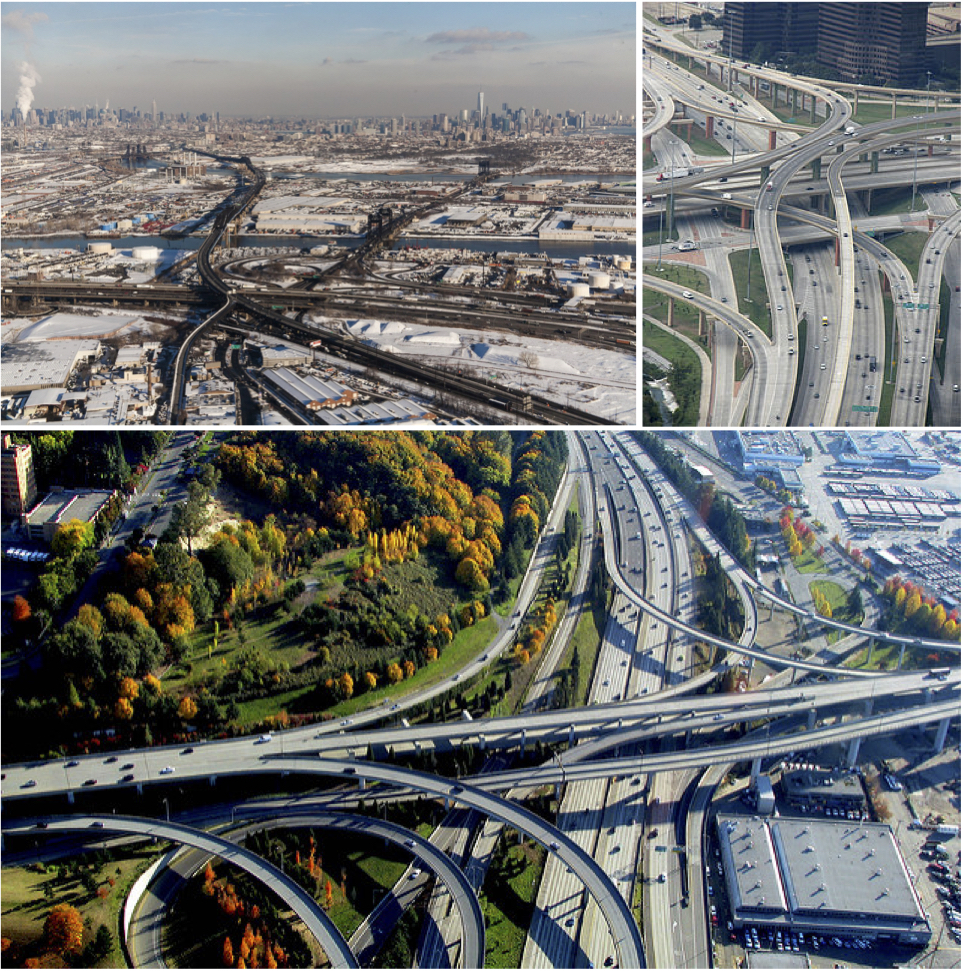
The Pulaski Skyway in Newark, NJ, with the Lincoln Highway’s two black bridges that cross the Passaic and Hackensack Rivers and the Manhattan skyline in the horizon (left). The High Five Interchange in Dallas, Texas uses a complicated five-level stack interchange to accommodate the traffic volume (right). An aerial view of the highway system in Seattle (bottom).
Americans’ reliance on cars increased, along with pollution, as they no longer lived close enough to walk to stores and schools.
Mass transit systems were losers in the quest to connect urban centers to nearby suburbs and to other urban centers. The interstate highway system encouraged the American cultural fetish of individuality embodied in the automobile. Mass transit, on the other hand, smacked too much of socialism, which of course was the enemy in the Cold War. As late as 1989, expenditures from the trust fund for highways totaled $13.5 billion, while mass transit projects received only $3.5 billion.
Railroads faced difficulties as well after WWII. Passenger traffic dwindled to a trickle, having lost out to the automobile and, for cheaper transportation, intrastate and interstate bus systems. Railway freight operations continued to lose out to the motor truck and water carriers, which received support from the Army Corps of Engineers.
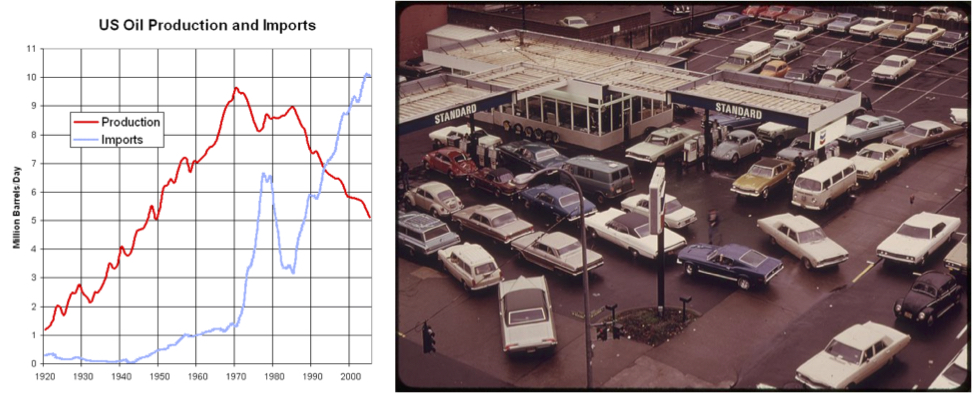
A graph depicting U.S. petroleum production and imports from 1920 to 2005 (left). A gas station in Portland, OR during the oil shortage in 1973 with long lines of cars waiting for gas (right).
The energy infrastructure also suffered because of political stalemates in Congress and the effects of international politics. National regulation of natural gas production through the Federal Power Commission (FPC) restrained exploration for new gas. Complex international Cold War politics created a two-tiered price system for petroleum (imported and domestic), and that, too, slowed down exploration for new oil.
Then came the Energy Crisis of the 1970s.
Evening news programs showed long lines of cars at the nation’s gasoline stations and prices soaring well above previous highs. Middle East oil producers had taken control of their national resources, raised prices, and reduced deliveries overseas. Domestic producers did not have enough oil on hand to lower prices.
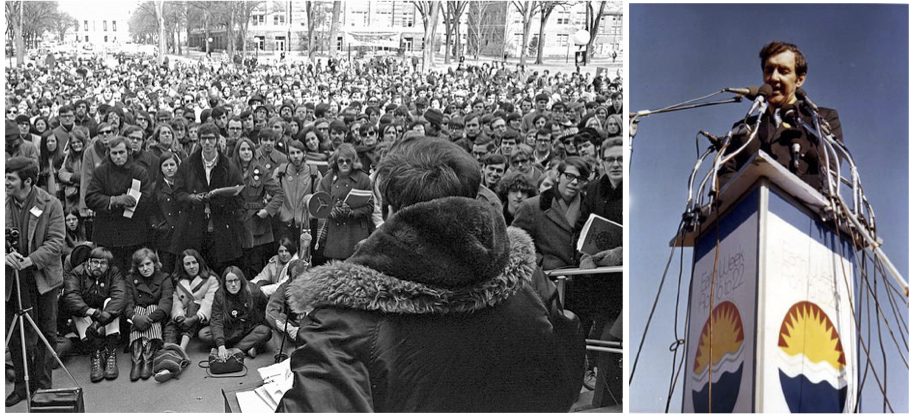
Students at the University of Michigan listen to a speaker at the first Earth Day in 1970 (left). Senator Edmund Muskie, a Democrat from Maine and author of the 1970 Clean Air Act, delivering the keynote address at the first Earth Day in Fairmount Park, Philadelphia in 1970 (right).
Less apparent on the news but real to those suffering were the natural gas shortages, particularly in the Midwest. To meet acute shortages, the FPC scrambled to re-route gas from manufacturers to residential customers during severe winter weather. At least the energy infrastructure was flexible enough to do that.
At about the same time, the environmental movement emerged as a major force in American politics. Arguments for reducing carbon-based energy systems (that is, petroleum products) gained more legitimacy over the late 20th and early 21st centuries.
New Directions: Bridging to the Twenty-First Century
The period from the 1980s into the early 21st century saw the emergence of the Third Industrial Revolution. The Second Industrial Revolution did not stop, of course, but it did change, as manufacturing jobs gave way to automation and cheap labor overseas.
The Vietnam War in the 1960s and 1970s forced lawmakers to shift funds away from economic development into military procurement. After the 1980s, the national debt grew to unprecedented heights. Congress responded by reducing expenditures on infrastructure, keeping levels well below inflation levels and increases in GNP.
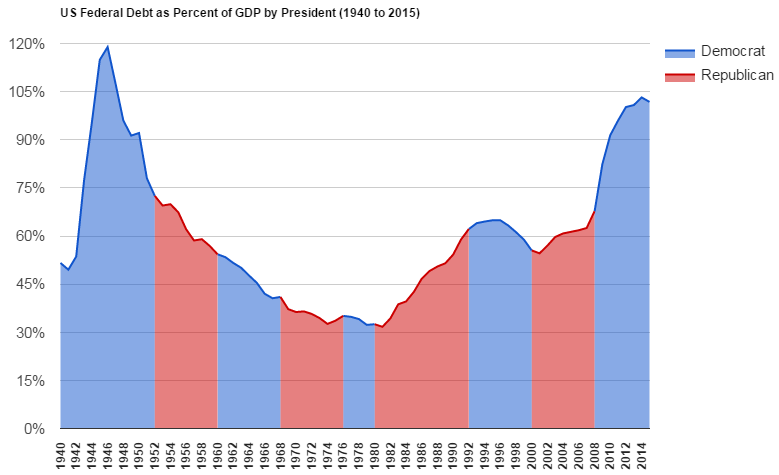
A graph depicting the U.S. federal debt as a percentage of gross domestic product from 1940 to 2015.
Chronic deficits and high inflation rates, prevented lawmakers from sustaining portions of the infrastructure that had made the affluent society possible. Cans were kicked down increasingly bad roads.
Although government funding of the older infrastructures lagged after the 1980s, four other infrastructure stories since the 1980s merit consideration: the communications, energy, and financial sectors (all of which were deregulated in the late 1970s and 1980s) and the Internet.
“Deregulation” was a combination of an ideological movement emphasizing “free markets” and of political groups in the 1970s who believed federal regulations impeded economic growth.
Deregulation of railways, trucks, and airlines brought economic benefits, especially in the form of lower prices for consumers. Deregulation of communications unleashed innovation on a number of fronts. Deregulation of the energy and financial sectors had mixed results.
Communications
After World War II, government policies separated one communication system from another (data, voice, and video). This artificial separation discouraged cross-fertilization and integration of technologies. Economic growth and global trade strained the communication infrastructures and forced changes.
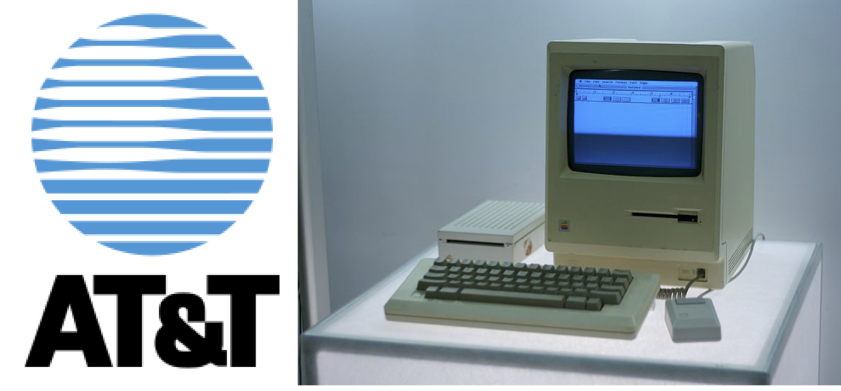
The logo for the American Telephone and Telegraph Corporation from 1983-1996 (left). Apple’s Macintosh computer, released in 1984, was the first mass-market personal computer with a mouse and integral graphical user interface (right).
AT&T had maneuvered early in the 20th century to become a regulated monopoly, which protected it from competition. By the 1980s, however, AT&T could not keep up with demand. The Federal Communications Commission (FCC) allowed other private systems into AT&T’s market.
By 1984, AT&T realized that it could be more profitable if it gave up its monopoly (and along with it the prohibition against manufacturing communication devices).
IBM, Microsoft, and Apple, along with numerous start-ups that were swallowed up into larger firms, used government-sponsored research to produce new products, the most ubiquitous of which was the mobile phone .
Energy
After deregulation of the energy sector in the late 1970s, exploration for oil and gas expanded, and the increased supply led to generally lower prices over time for both. Government subsidies in the form of tax breaks shored up the expansion, as did technological developments, particularly horizontal drilling.
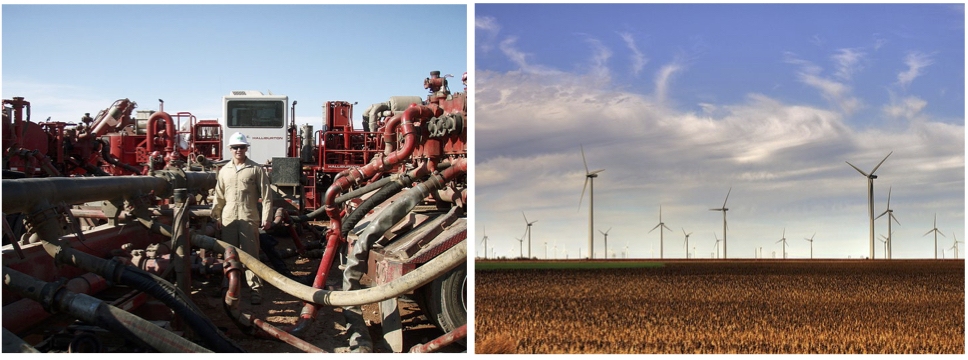
A fracking operation in the Bakken Formation, ND run by Halliburton (left). The Smoky Hills Wind Farm in Kansas (right).
By the early 21st century, drillers combined horizontal drilling with “fracking” to unleash immense amounts of crude and natural gas. Energy utilities and producers began constructing LNG plants in order to transport natural gas overseas. Oil pipeline firms requested permits for even more pipelines to transport the extra crude being produced.
Meanwhile, a variety of subsidy programs on the local, state, and national levels—touted by environmental groups—supported energy efficiency programs (improved construction techniques, better insulation) and the adoption of non-carbon-based energy sources, such as wind, solar, and geothermal.
The rise of these alternative energy sources recently led to a reduction in the use of coal, which had sustained the generation of electricity for much of the 20th century. In addition, environmental groups—worried about rising levels of CO2 in the atmosphere and resulting climate changes—succeeded in litigating against the expansion of coal-fired electric plants .
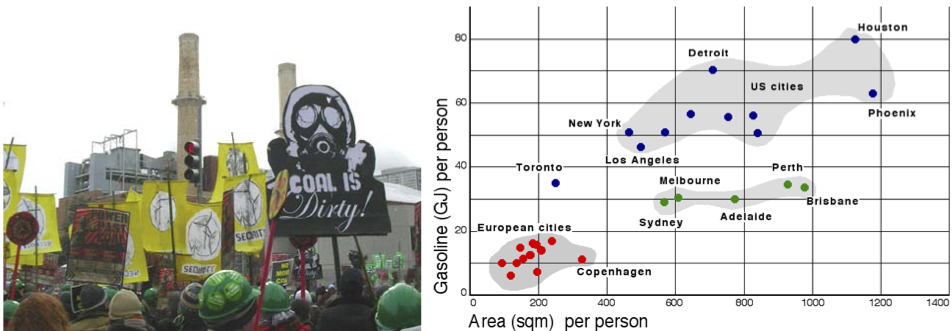
A 2009 protest against the coal fired Capitol Power Plant in Washington, D.C. (left). A graph based on data from 1989 showing the relationship between overall urban density and transportation energy use (right).
By the middle of 2010s, government subsidies and consumer choices had altered the American energy mix. Natural gas was replacing coal-fired plants. More and more consumers were choosing to put solar panels on their roofs or in their yards or chose an electricity provider who purchased from alternative energy sources.
Today, the use of home-based solar panels is challenging the prevailing infrastructure system of centralized electric generation: Should customers with solar panels be able to sell back electricity to the utility? How much should they pay to be connected in case their local generation fails? Are customers without the ability to purchase solar panels at a disadvantage? Will the centralized, large-scale, twentieth-century utility model continue?
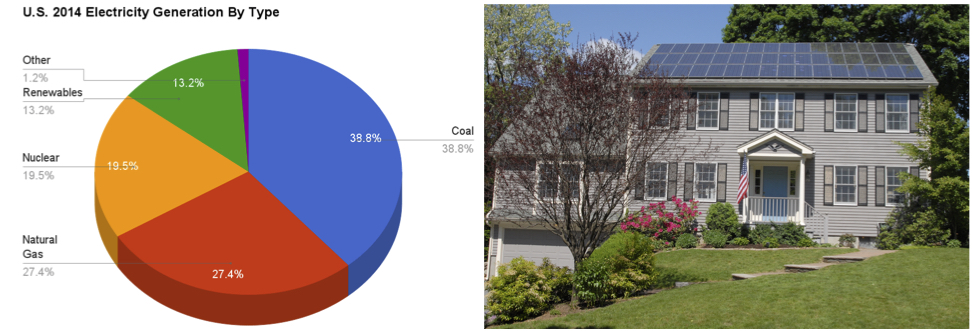
A graph depicting U.S. energy production by type in 2014 (left). Solar Panels on the roof of a house near Boston, MA (right).
Finance
The deregulation movement for banks spanned from the 1960s to the late 1990s. Bankers wanted freedom to offer more services to customers, from checking and savings accounts to credit cards to stock brokerage accounts so that they could earn more profit for themselves and their stock holders.
The Clinton administration oversaw the final move to eliminate one of the most important New Deal laws—the Glass-Steagall Act of 1933. Now banks could be both investment and commercial banks, and could link the two together. Since the 1980s, regulatory oversight of most banking activity had been relaxed, either through legislation or executive action.
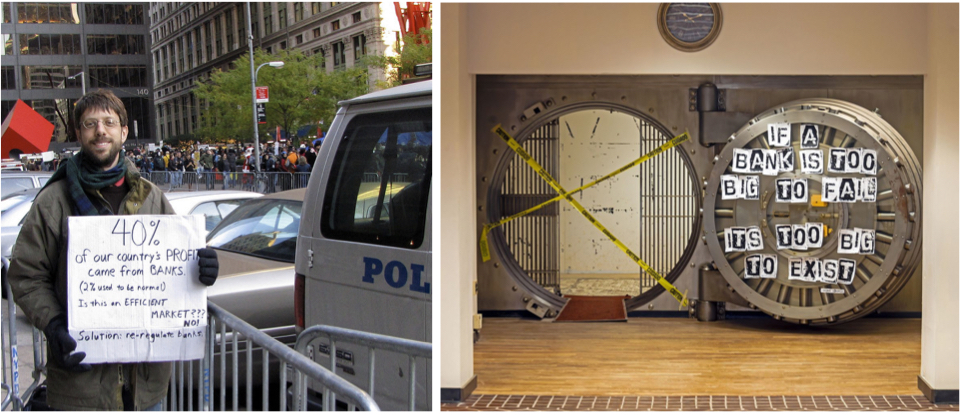
A protestor at the Occupy Wall Street Protests in 2011 with a sign calling for the re-regulation of banks (left). A vault at the former Poughkeepsie Savings Bank in Poughkeepsie, NY decorated with a quote from Democratic presidential candidate Bernie Sanders in 2016 (right).
To stimulate more home ownership, politicians relaxed oversight of mortgage-granting institutions and the secondary markets for mortgages . More and more Americans bought houses they could not afford.
This lack of regulatory oversight contributed to the financial crisis of 2007-2008 and the subsequent Great Recession. Lawmakers scrambled to recover control and came up with the cumbersome Dodd-Frank Wall Street Reform and Consumer Protection Act of 2010.
The Internet
The most significant infrastructure development of the late 20th and early 21st centuries is without a doubt the Internet.
It began with government employees exchanging memos in the early 1960s and expanded through sponsorship from the Defense Department’s ARPANET, which connected scientists at universities and government agencies who worked cooperatively on R&D through DARPA (Defense Advanced Research Projects Agency).
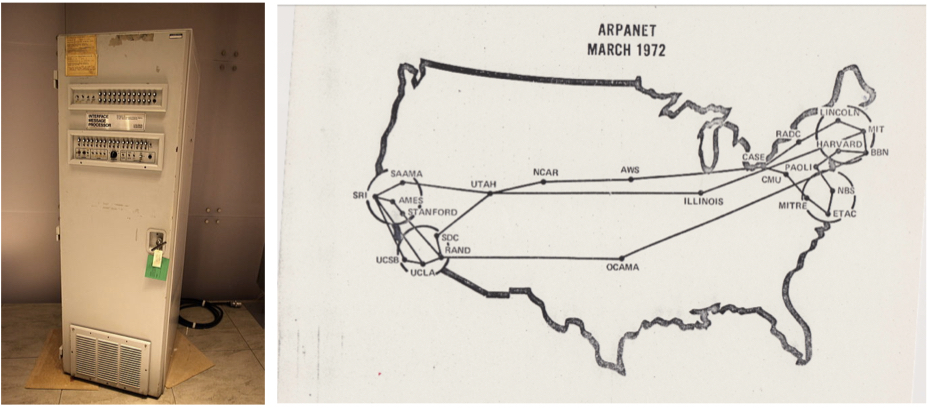
The BBN Interface Message Processor sent the first ARPANET transmission between the University of California, Los Angeles and the Stanford Research Institute in 1969 (left). A map depicting the places connected to the Internet in 1972 (right).
Satellite communications and telephone wires, connected initially to four computers in the late 1960s, expanded to 2,000 computers in the 1980s. The Internet, as the system became known, allowed its academic users to “chat” on “bulletin boards” to exchange ideas and concepts.
The U.S. government really did invent the Internet. The National Science Foundation (NSF) administered it in the 1980 but did not allow commercial use of the system. Business applications were so apparent and compelling that the NSF gave up its role in 1995, about five years after the Internet had been privatized.
Where there had been 25 linked networks in the early 1980s, there were 44,000 by the mid-1990s. In 1993, 90,000 Americans used the Internet regularly; by 2000, 90 million did so. By the end of 2015, 3.2 billion used the Internet globally (of a population of 7.3 billion).
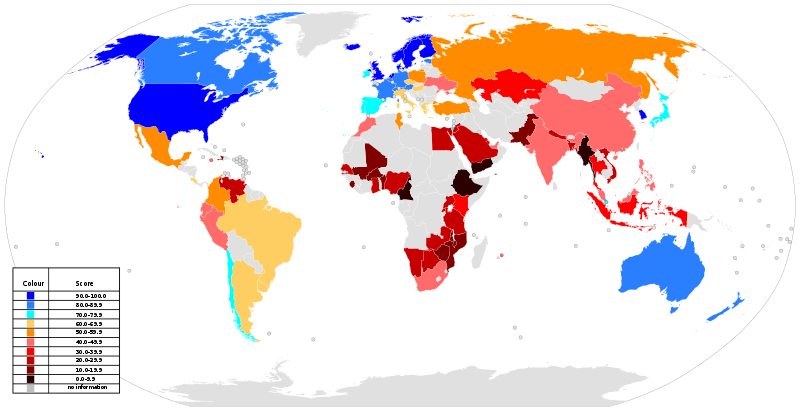
The Internet morphed into an economic and cultural phenomenon that served the private sector and inspired entrepreneurship around the world.
This could not have happened without the invention of the World Wide Web in the late 1980s and 1990s. The Web is the method for storing documents and other content “online” (or on “servers”) and allowing others to access that information from other networks.
Economically, the Web and Internet present extraordinary opportunities for entrepreneurs to develop and sell products and services. Amazon.com—like Sears, Roebuck in earlier times—has taken full advantage of the new infrastructure of the Internet, along with transportation infrastructures, to enable people to buy and receive products from anywhere in the world at any time of the day.
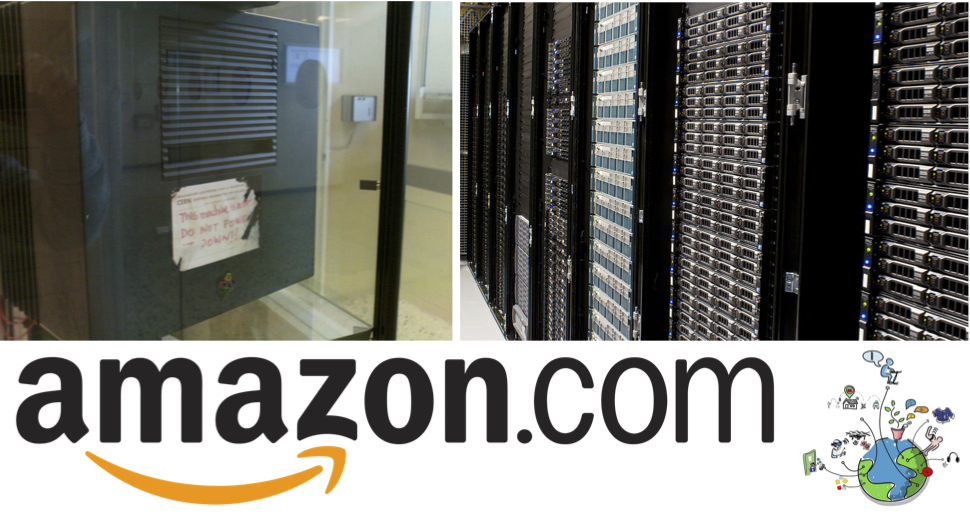
The first web server with a note still attached reading: “this machine is a server, do not power it down” (left top). Servers for the Wikimedia Foundation (right top). The logo for Amazon.com, the largest internet-based retailer in the world (bottom left). A drawing of the Internet of Things, web-connected devices like a drone, a plant, a home, music, and clothing (bottom right).
Perhaps as important is the so-called Internet of Things. Sometime in 2008 or 2009 there were more things connected to the Internet than people: home control systems, banking accounts, security video cameras, automobile systems, dogs, cows, and so much more. In 2015, it was estimated that 25 billion things were connected to the Internet.
Private-Public Infrastructure Today and Tomorrow
Since the 1980s, there have been movements to “privatize” infrastructure and to shift away from the public-private relationship that has worked so well for so long.
Some argue that the private sector, being mindful of profit, will hold down costs and thus furnish infrastructure more efficiently than can governments.
However, road projects in Indiana, Texas, and California have shown that not to be the case. Privatization of municipal and state infrastructures (water, parking meters, police and fire, prisons) has not always gone well.

Built in 2015, the Orchard Pond Parkway in Tallahassee, FL is the state’s first privately built toll road (left). The toll plaza of the Dulles Greenway—connecting Washington Dulles International Airport with Leesburg, VA—opened in 1995 and was Virginia’s first private toll road since 1816 (middle). The city of Chicago leased out the Chicago Skyway for 99 years in 2006 for $1.8 billion (right).
But some of the P-3s (PDF File) (Public-Private Partnerships) have. These successes have included emphasis on transparency throughout the process of bidding, construction and operation, and on hiring private specialists.
There is another approach that has been successful. The American air traffic control (ATC) system and airport services are woefully inadequate and behind the times in large measure because lawmakers have not invested enough and bureaucracy has stymied innovation.
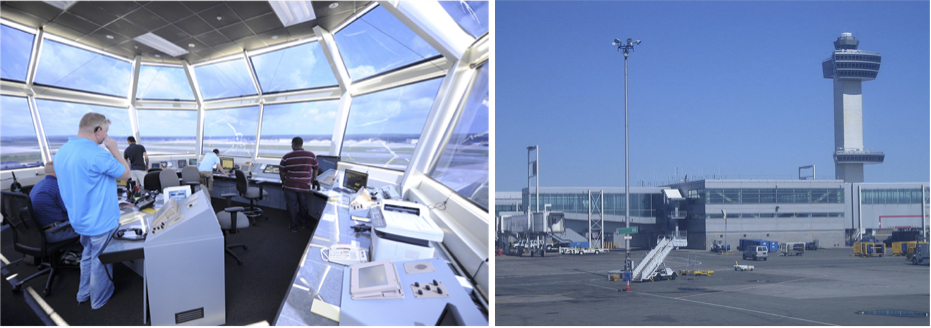
The remodeled Pope Field Air Traffic Control Tower in Pope Field, NC opened in 2013 to replace the tower built in the 1970s for the U.S. Air Force (left). Built in 1957, the air traffic control tower at the John F. Kennedy International Airport handles over 1,000 flights a day (right).
Canada may have found a solution: In 1996 lawmakers created a private, non-profit group, the Canada Air Navigation Service Provider , to manage and expand the nation’s ATC system and to improve airports. Installation of the latest technology has made the airlines safer and more economical in Canada.
The mixed public-private approach is a strength, but not spending enough on infrastructure maintenance and expansion is a weakness that has plagued the American political economy since the 1980s.
During that same time, moreover, some Americans have grown fabulously wealthy while many others have stagnated in wealth or even fallen down the economic ladder, with almost one in five children now living below the poverty line in the U.S. History suggests that if Americans really want to attack today’s skewed wealth and income-distribution problems, they could invest more in their nation’s infrastructure.

As part of the American Recovery and Reinvestment Act, President Barack Obama announced a $28 billion infrastructure plan in 2009 at the start of the Great Recession (left). Soldiers with the Texas Army National Guard move through flooded Houston roads as floodwaters rise in August 2017 after Hurricane Harvey (right).
A good time to have done something more dramatic and helpful was lost to politics during the Great Recession, which began with the financial crisis of 2007-08. Arguably, the lack of more infrastructure spending at that time slowed the economy’s rebound from the Great Recession and led to today’s sluggish growth.
President Trump campaigned on the promise of large-scale infrastructure projects. However, the financial support being discussed for the recovery from Hurricanes Harvey ($180 billion and counting) and Irma, along with the current lack of political leadership, will probably delay action further.
Bilstein, Roger E. “Aerospace Technology,” Vol. II The Economy, The Encyclopedia of the United States in the Twentieth Century, Stanley Kutler, ed. (New York, 1996).
Childs, William R. “The Infrastructure,” Vol. III The Economy, The Encyclopedia of the United States in the Twentieth Century, Stanley Kutler, ed. (New York, 1996).
Drew, Elizabeth, “A Country Breaking Down,” The New York Review of Books, February 25, 2006.
Hines, Lawrence G. “The Early 19th Century Internal Improvement Reports and the Philosophy of Public Investment.” Journal of Economic Issues 2, no. 4 (1968): 384-92. http://www.jstor.org/stable/4223970.
Kouwenhoven, John. Beer Can by the Highway: Essays on What’s American about America (1961, 1988).
Mettler, Suzanne. Soldiers to Citizens: The G.I. Bill and the Making of the Greatest Generation (2005).
Hounshell, David A. “Industrial Research and Manufacturing Technology,” Vol. II The Economy, The Encyclopedia of the United States in the Twentieth Century, Stanley Kutler, ed. (New York, 1996).
McCraw, Thomas K. and William R. Childs, American Business Since 1920: How It Worked (3rd edition, Wiley, January 2018).
Rose, Mark H., Bruce E. Seeley, and Paul F. Barrett, The Best Transportation System in the World: Railroads, Trucks, Airlines, and American Public Policy in the Twentieth Century (2006).
Usselman, Steven W. “Computer and Communications Technology,” Vol. II The Economy, The Encyclopedia of the United States in the Twentieth Century, Stanley Kutler, ed. (New York, 1996).

